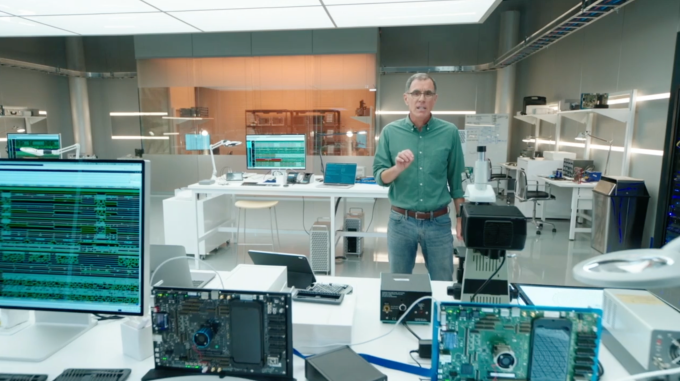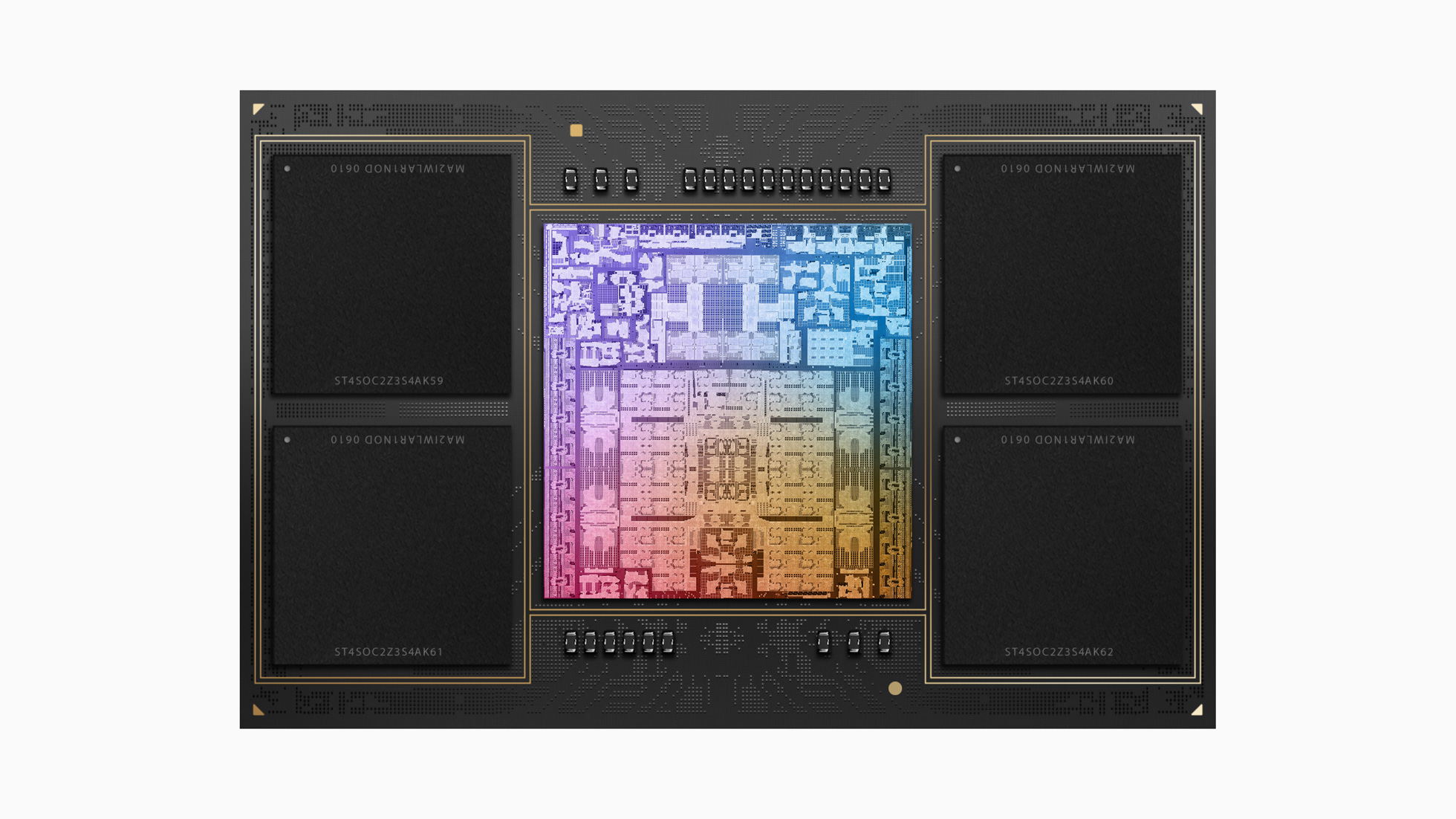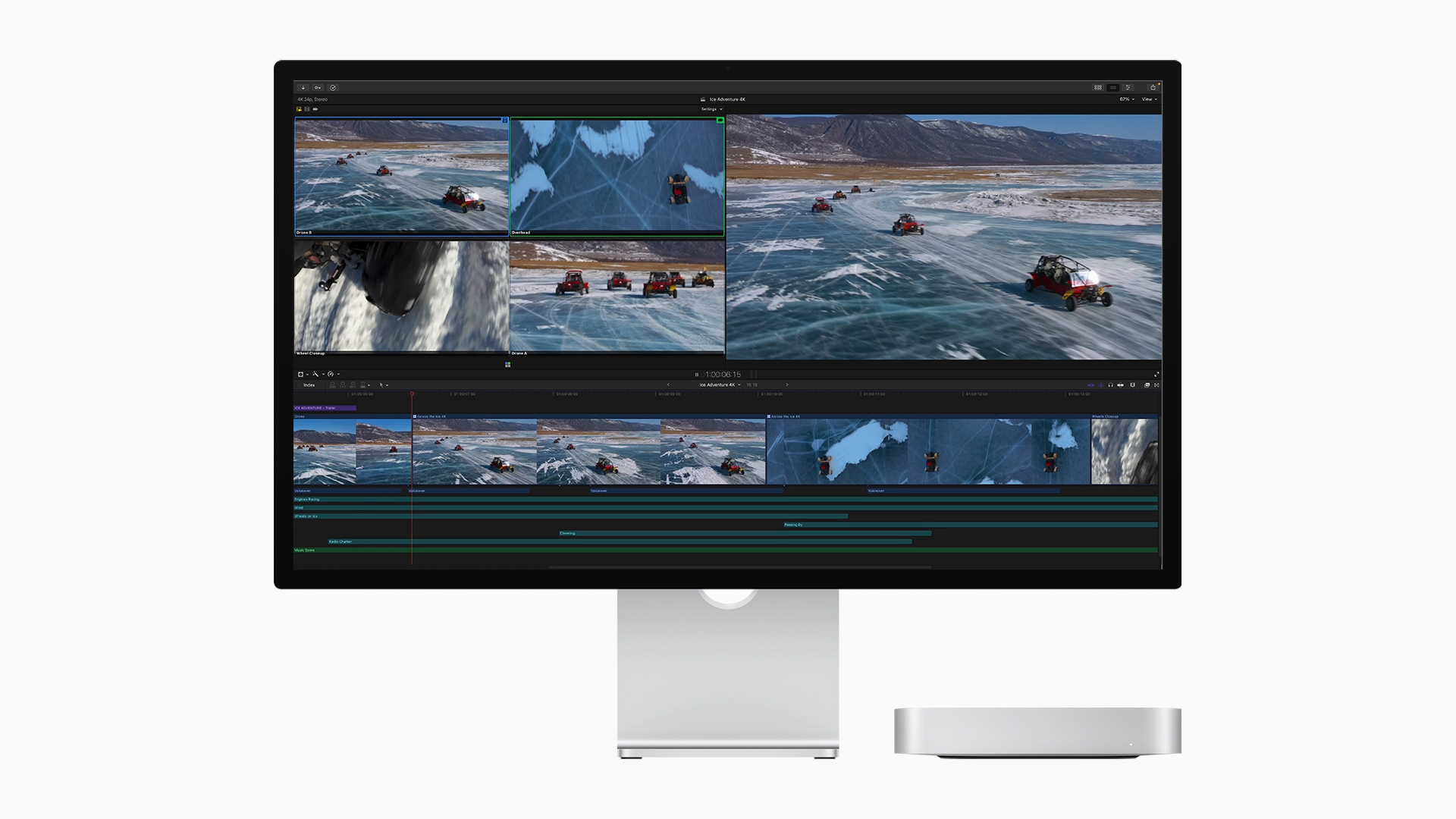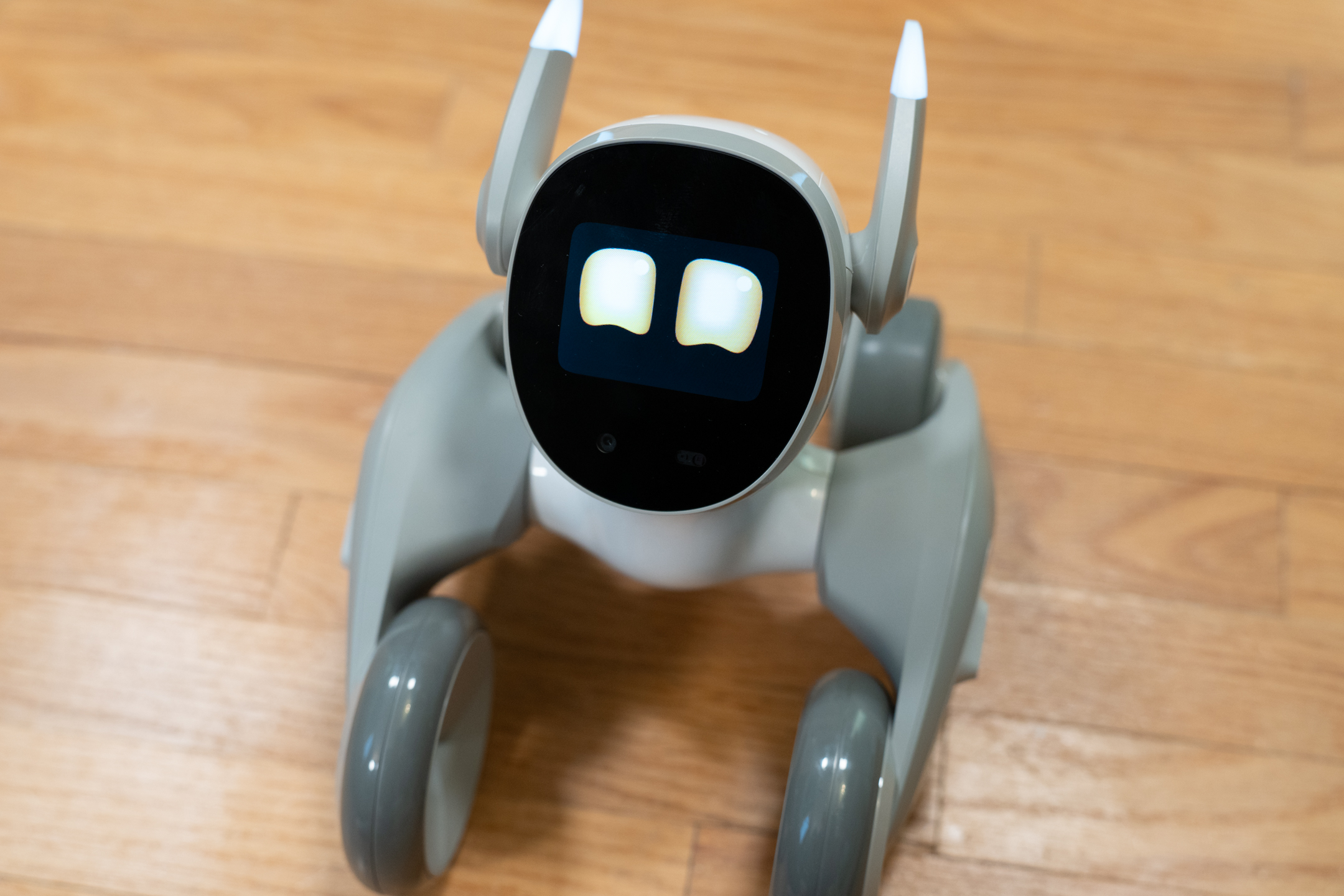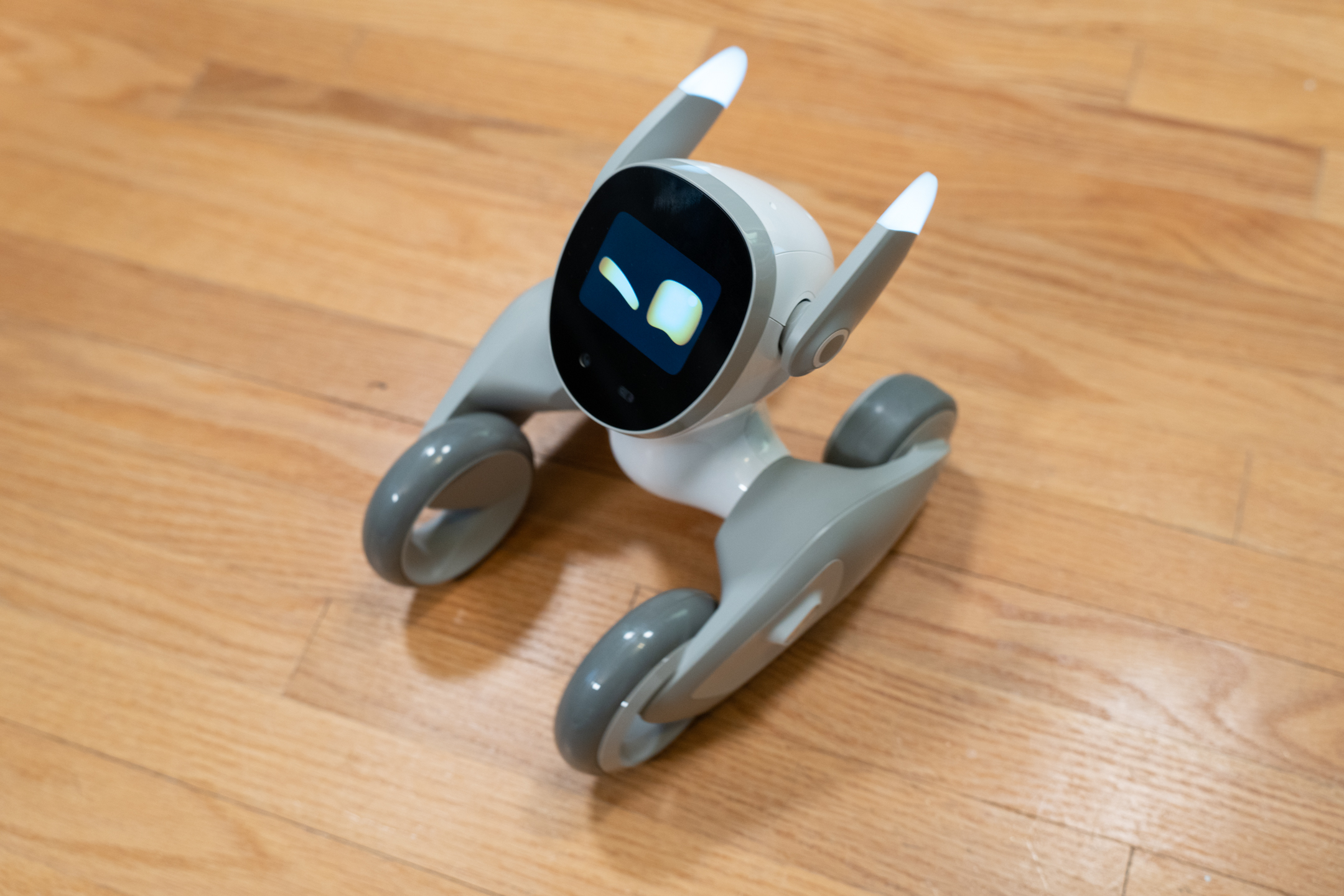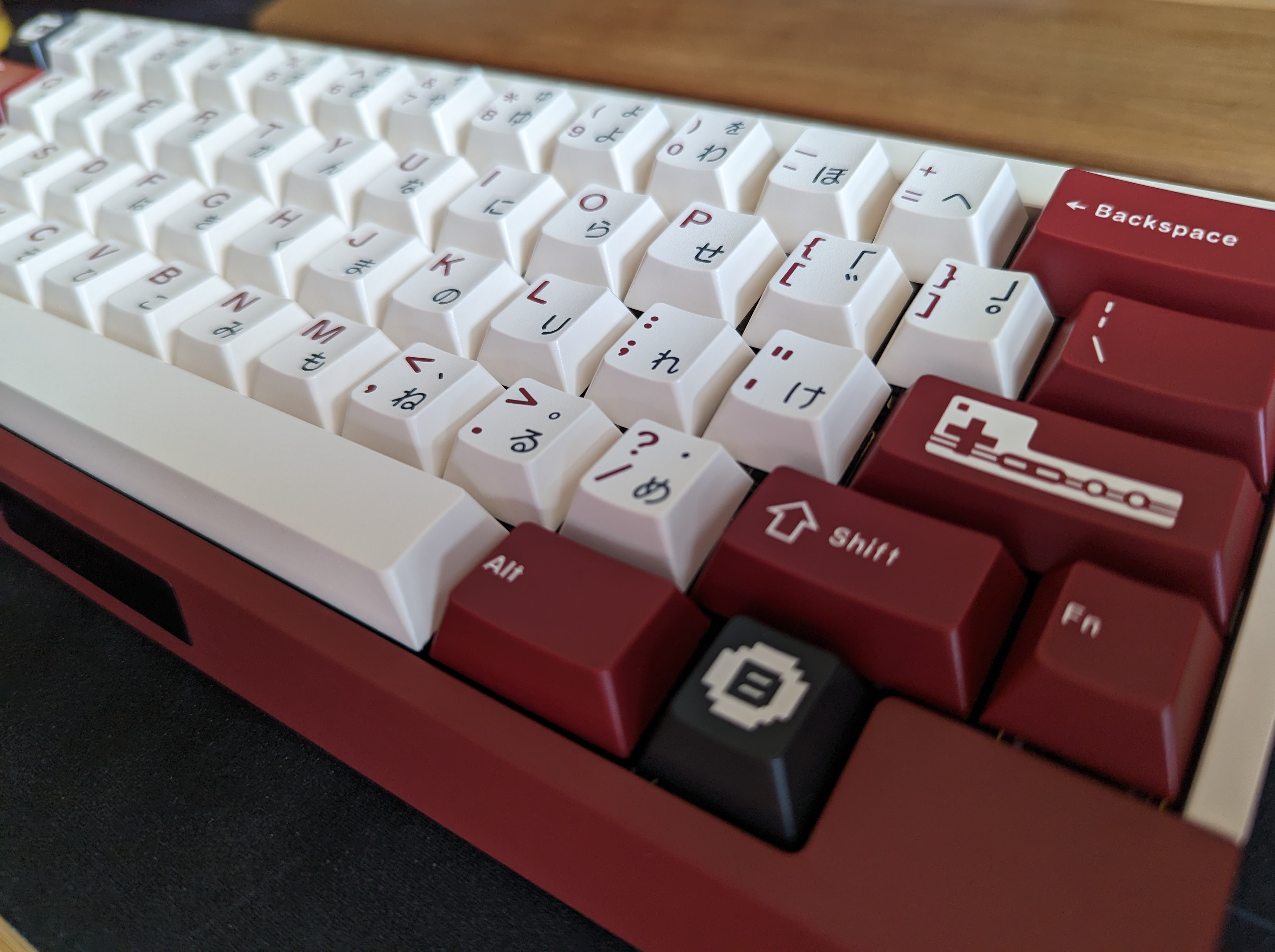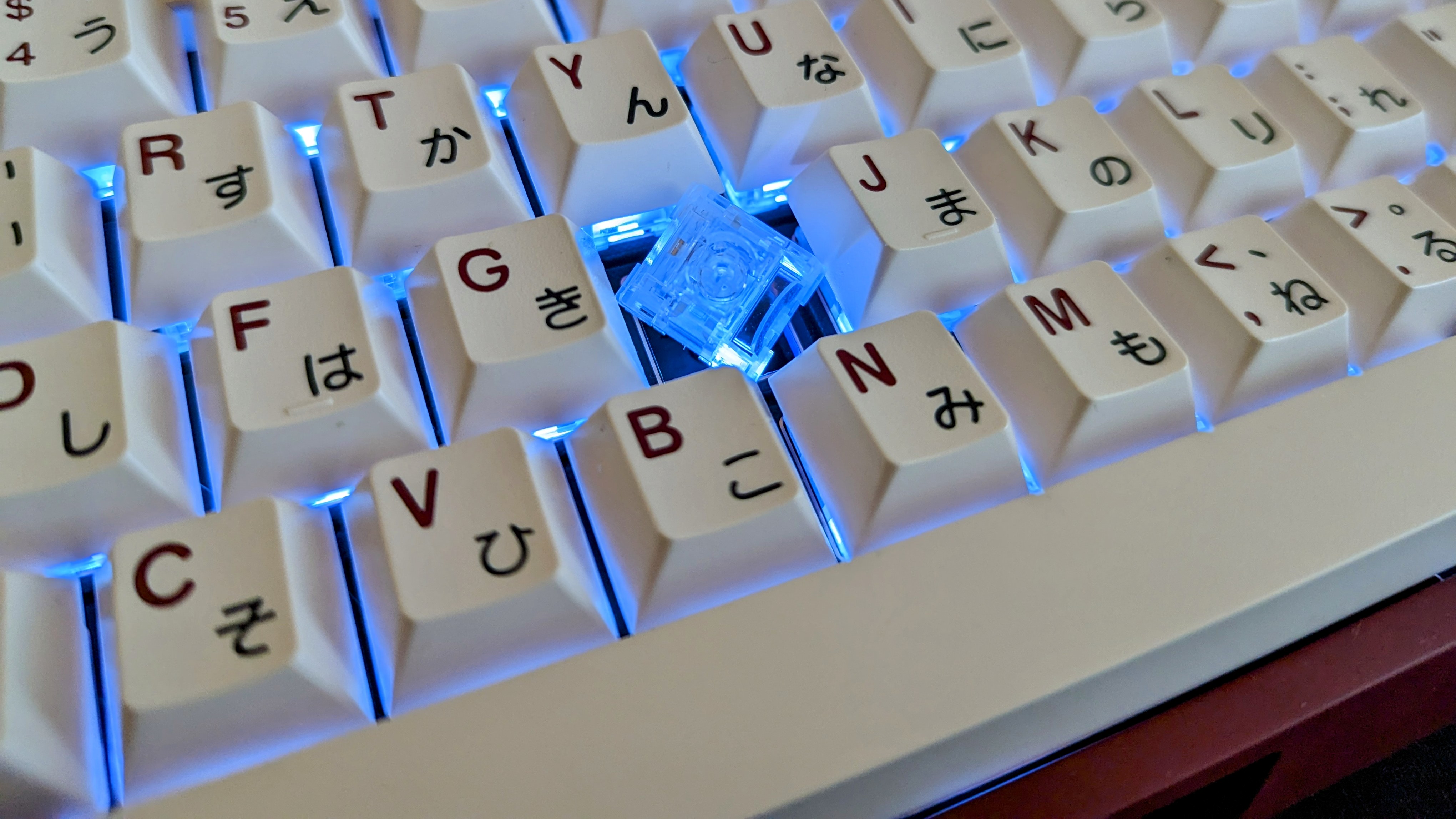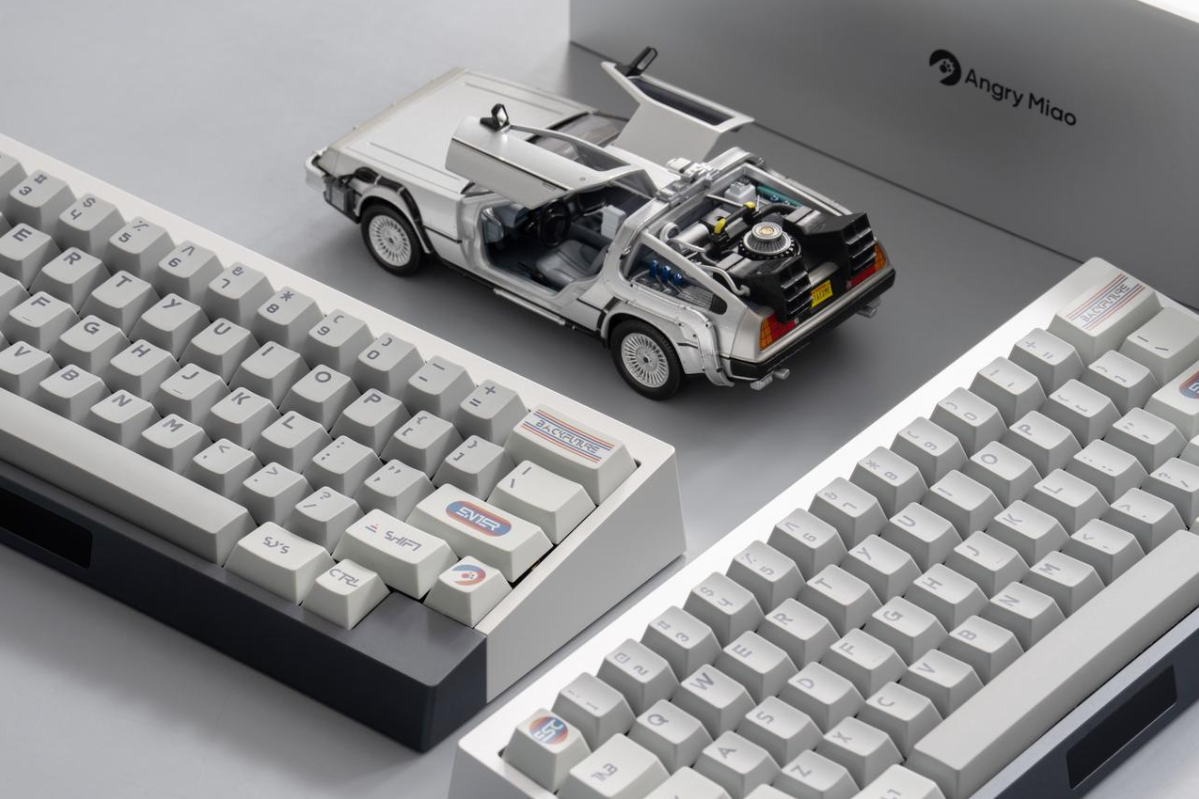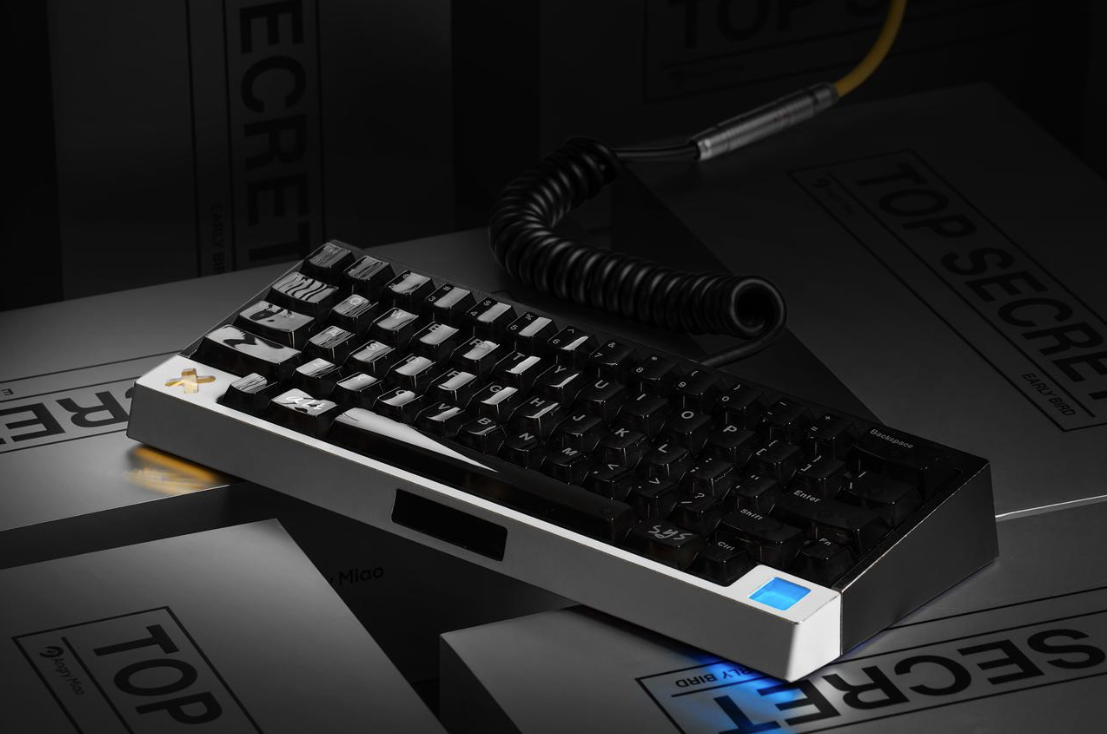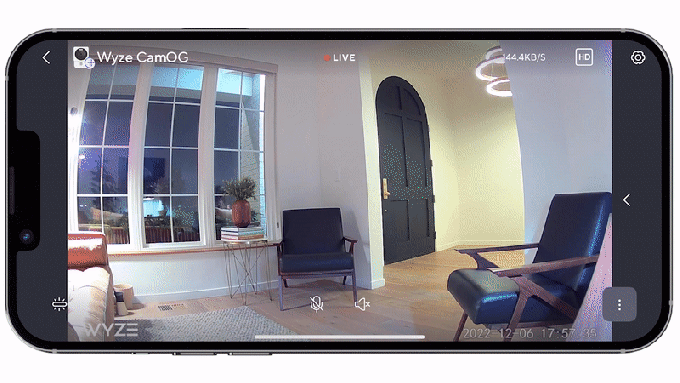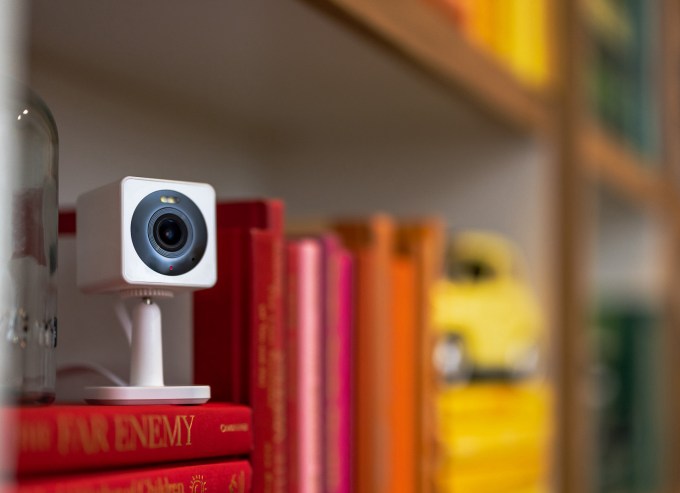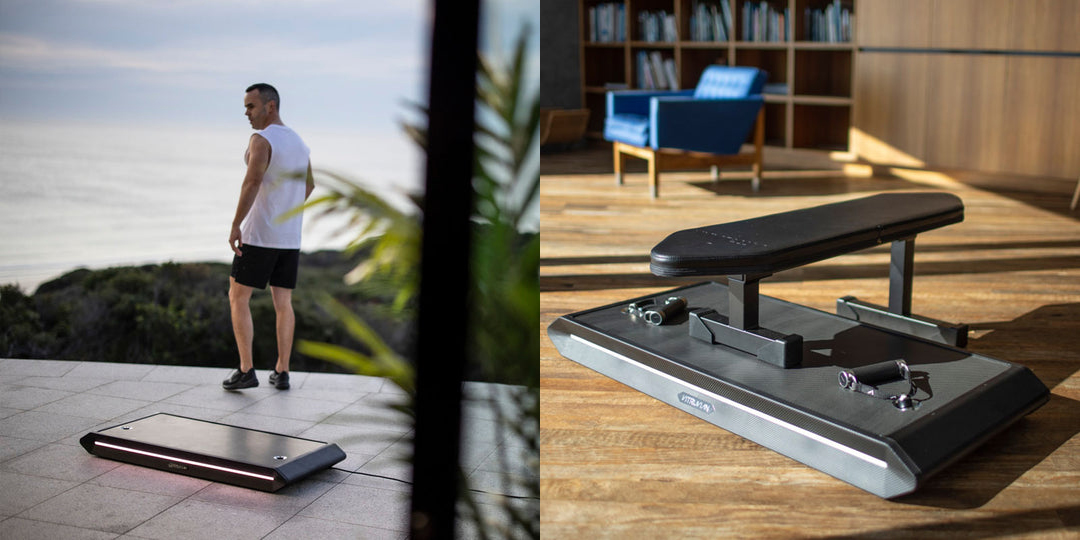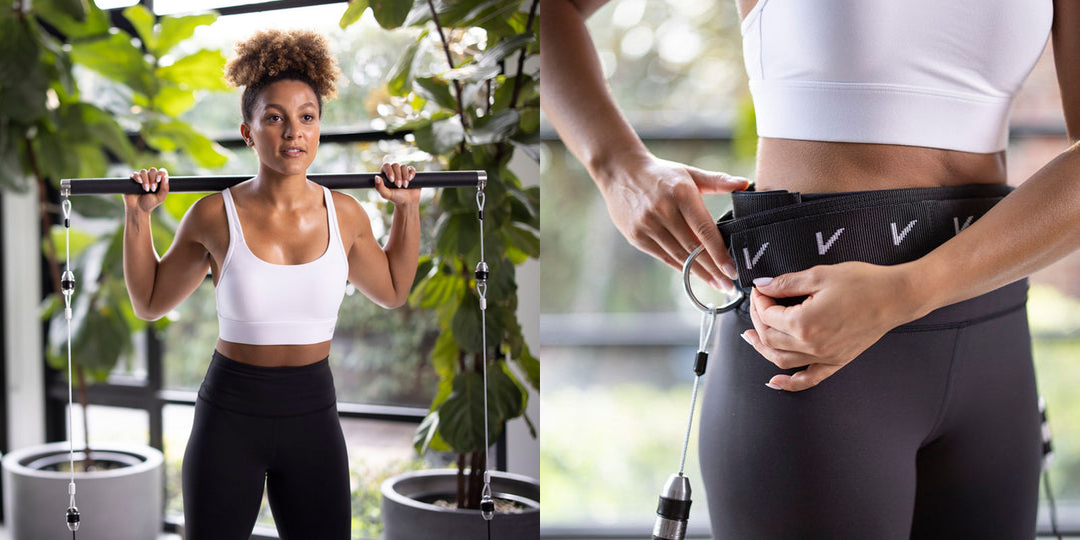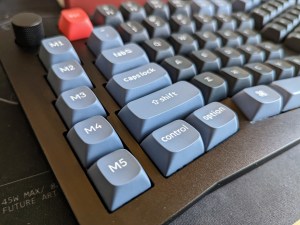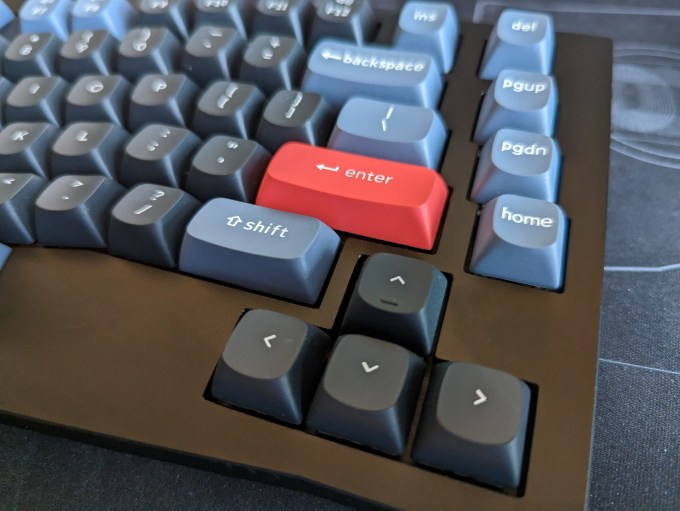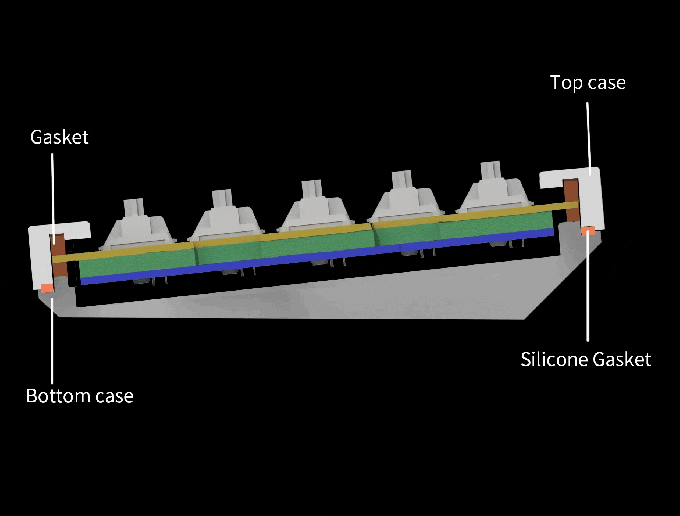Monavo Heath turned heads at CES with an Ouroubouros-esque smart ring designed for women.
In the crowded field of fitness wearables, where the mainstream heavy hitter of the Apple Watch heads up a very long tail of typically less pricey and/or more specialist activity tracking bracelets and bands all keen to claim their own patch of data-generating skin, it’s no small irony that differentiation at this point in the market’s run means designing a product to ‘target’ around half the population — as my colleague, TC’s hardware editor Brian Heater, dryly observed of Monavo’s pitch for a smart ring called “Evie” last month.
But what does a wearable made for women actually mean in terms of utility and design? TechCrunch talked to Monavo Health’s CEO and director, John Mastrototaro, to get the inside track on the forthcoming smart ring and delve into its wider roadmap as it works on building a medical devices company whose starting point is simply putting women first.
Monavo is kicking things off, pre-commercial launch, by applying for FDA clearances for two of the metrics the smart ring will track out of the box: Heart rate, and SPO2 (aka blood oxygen level) — and it says it wants the ring to launch with those two regulatory check-marks in place — but with plenty more on the ‘to-do’ slate.
Including — down the line — a goal of adding (non-invasive) blood glucose monitoring into the mix. (Its novel sensing tech remains at a prototype stage for now but Mastrototaro flashed us a look at an integrated RF chip and a wrist-mounted prototype it’s currently testing for this purpose.)
As regards the first iteration of the ‘smart ring for women’ — which will track over a dozen metrics and offer female-focused features like menstrual cycle and mood tracking and support for menopausal symptoms, as well as more regular wearable stuff like activity tracking — Mastrototaro said he’s hoping they’ll be able to launch it in the US around the middle of this year.
The target customers will be women in their 30s and up. While the ring’s price-point will be “well under” $300 (and — refreshingly — there’s no subscription). And that pricing already looks competitive compared to the Oura smart ring — which is currently the main rival for finger-based wearables in the US.
Monavo’s also made some other smart choices to go with a paired down price-tag — including an open design that won’t pinch fingers if they swell a bit; a portable charging case to keep the ring safe and juiced up on the go; and the big strategic decision to apply for regulatory clearances which means the ring can be marketed (differentiated) as a medical device where most others can’t. Which is certainly one way to stand out in a noisy consumer crowd.
Mastrototaro brings a long career in medical device development already, having worked at a number of companies doing clinical research and R&D on sensing technologies — including at Medtronic, where he led the team that developed the first continuous glucose monitor (CGM) sensor for diabetes management.
That’s notable because a lot of startups have been tapping up CGM tech for commercialization in recent years — with the aim of repurposing a medical grade technology for a more general consumer fitness and/or wellness/health use-case. (Including, in the case of India’s Ultrahuman, combining CGM tech with a smart ring to enhance its ability to ‘decode’ the user’s metabolic health.)
Monavo is approaching the same goal — of encouraging more people to watch their blood sugar to help them optimize lifestyle choices and improve their overall health outcomes — but it’s planning to layer that (future) functionality atop a medical devices company foundation, rather than coming at it from a pure ‘wellness’ or ‘fitness’ consumer tech pitch as most of these startups are. Which may lend more credibility to any push it makes here.
Additionally, as noted above, it wants to offer a major twist on the technology side too, as it’s working on developing a non-invasive radio frequency sensor for tracking blood glucose changes.
If it can pull that off it could skate right past the CGM niche and have a shot at opening up a powerful capability to a general consumer who otherwise wouldn’t bother with this kind of health tracking — exactly because it requires sticking sensing filaments (or needles) into actual flesh. Whereas if Monavo’s smart hardware can give you a peek at blood sugar highs and lows via (painless) high frequency radio that implies potential for major, transformative health effects at scale. (Notably Apple has long been rumored to be working on adding non-invasive blood glucose tracking to the Apple Watch, although it’s yet to bring such a tech to market for its general consumer. But the attention on such a feature underscores how much this concept is prized.)
As well as FDA-cleared metrics (assuming Monavo does indeed obtain these clearances) lending credibility to hardware that will — in the first instance — be marketed to highly discerning consumers (i.e. women), the company dressing itself as a medical device maker is smart positioning as it sets the business up to be able to sell hardware into b2b markets too.
Per Mastrototaro, the goal here is to get to a position where, for example, its smart ring could be reimbursable by insurance payers as a preventative health device — so the aim from the start is to scale beyond a direct-to-consumer hardware business.
With demand for healthcare systems continuing to increase, both in the US and beyond, it looks like another smart bet. Certainly it’s not a stretch to imagine overstretched health services may well (also) end up being keen on consumer-friendly medical grade devices — devices they can offer their patients for home monitoring, on so-called ‘virtual wards’, as a cheaper way to free up hospital beds for people who need closer care.
This already partially forming future is what Monavo is positioning its wearable business for.
And, before you ask, it does have men on its roadmap. Mastrototaro says the end-game is to be — simply — a maker of devices for everyone.
But its first task, as it eyes the myriad players ranged on the wearables field — some high gloss, others rather more ragtag — is to find a way to elbow in. And what better way to do that than remember the roughly half of the population most device makers consider a mere afterthought. It ain’t rocket science guys.
Our full Q&A with Movano Health’s CEO & director, John Mastrototaro, follows below. The interview has been lightly edited for clarity and length.
TechCrunch: Why do women need a dedicated wearable? So what is your hardware going to be able to track and provide women that other smart rings or wearables can’t?
Mastrototaro: It’s a great question. I mean, first off, our goal as a company is to empower and inspire women to take more active control of their health and to live a happier, healthier, more well balanced life. And the way we’re going to go about doing that is by monitoring a comprehensive set of health metrics: Heart rate, heart rate variability, SPO2, respiration rate, temperature, steps, activity, calories, burned, sleep, sleep stages, and of course, menstrual cycle tracking as well — as well as a couple of other things related to menopause and help in tracking any kinds of symptoms they may have, both through their menstrual cycle as well as when they age and get into the menopause period of life.
One of the things that we found when we started to look at the existing wearables that are on the market today is two things: One, none of them are medical devices — and I’ll talk in a moment about why being a medical device company is really important to us and, we think, important to consumers — and then secondly, that women seem to have been underserved in the wearables market. Most wearables look like they were initially designed for men. They’re kind of thick, bulky, and typically came in male-looking colors — and then subsequently, they’ll change up things a little bit and say, you know, here you go, ladies, here’s the female version.
We spoke to over 1,000 women and asked them what was important to them as they age and related to their health. And we found that, although they want to use wearable products like this, often they don’t [use them] or they only use [them] a part of the time because of some of the shortcomings with the existing devices where they don’t really focus on women’s needs. And so we really focus on what [women] want to see in a health wearable. And one of the things that was very important to them was the accuracy of the data that we provide, as well as helping them understand their body through their cycle, and how every aspect of their health may be affected by that, and also helping them as they age into menopause.
There’s been a survey done that said 92% of women feel unprepared for menopause. And, as we know, 100% of women are going to go through that stage of life. And so we also want to provide resources and help to women as they age — with more than just the health metrics but distilling it down into what it all means to them and their health.
TechCrunch: The question then is how do you do that with this piece of hardware? So are you able to do menstrual tracking, for example, through tracking body temperature? How does the hardware enable you to sort of provide this additional layer of utility to women?
Mastrototaro: Certainly the hardware does provide that utility. And yes, by monitoring their temperature, through the course of the month, as well as their heart rate, we can track and predict when, say, the period is about to start. So that’s certainly one aspect of what we’re doing. But in addition to that, a lot of what we’re going to be doing is asking women about how they feel, and what are their goals for their health — because everyone’s unique, and how people go about getting their activity is unique. Not everyone does 10,000 steps a day… Some people may prefer to swim or they may prefer to cycle. Whatever the case may be. We want to make sure that we’re collecting that data about their activity, and about the calories burned, so they understand that — and also do a lot with correlations.
One thing that’s very important to us is to correlate how one thing may affect another. For example, if a woman experiences headaches at a certain time of the month or she starts to have her first hot flash related to menopause, we want to help explain how maybe activity levels — and the intensity of activity — how much they sleep etc could affect the likelihood of those events. Or things that they could do to try to either reduce the frequency or reduce the severity of events when they occur. So a lot of it has to do with tracking metrics directly. But we also take into account individualized communication between the app and the user.
TechCrunch: Female health historically, as you surely know, has been terribly under studied. So the question then is, okay, you’re going to be acquiring data from the users and hopefully using that to spot these patterns — but can you offer this utility initially? Or is this a sort of a journey for the user that they have to be on with you as you build the data to pick up patterns and figure out correlations?
Mastrototaro: A little bit of both. We are contracting with female medical experts. For example, we’re working with a female doctor who is an expert in women’s sleep. We’re working with a female doctor who’s an expert in menopause. We’re working with female doctors in different disciplines along a woman’s health journey. And so as a woman may be experiencing one of the symptoms or stages of their life, we can provide some expert support, through canned messaging about, here’s why it’s happening, here’s why it’s nothing that you should be concerned about. It’s part of the ageing process. And here’s some tips about how you can manage through this. But as well as doing that initially, you’re right — over time, we’ll be building up a database of all of this for many, many 1,000s of women, that we can mine and leverage that data to help us understand little tricks that may have worked better for one population versus another.
The other thing that we will provide through our app experience is community. Many women have told us that they like to share with one another. And so we will also offer the ability for women to peer-to-peer, communicate and say ‘Hey, I’m having a problem with this. Has anyone experienced that before and any insights you can provide me?’. And then we’ll allow women to speak with one another, to also share. Because this is something that some women told us was important to them.
TechCrunch: So what’s the user experience going to be — talk me through how the user will use and experience the hardware and the app. And also this community element. How will it all fit together?
Mastrototaro: Yeah, that’s a great question. And actually, the three things you just mentioned are the most important pillars for us with the product. So let me start with first about the ring, the design of the ring — even the charging of the ring. Because we did think about women as we did this. So the ring… you can see it’s an open design. That was important to us, because it has a little bit of give. It has a little bit of play in it. And so if your finger happens to swell at a certain time of day, or the month or whatever, it has a little bit of give to it. When we were at CES and many media folks came by… several were wearing an Oura ring as an example. And they wore our ring. And they really liked the way it felt on their finger. And they like the way it looked on their finger. And so there was a lot that went into even the design of the ring itself.
The second thing that was very interesting to [us was] the charging case. The charging case looks like a little compact device. And you slip the ring into it to charge. You can see it’s [in the case] flashing lights now, it’s charging. And so women love the portability of this in that you can slip it in your purse, take it with you on a trip. This charging case will charge the ring 10 times. The ring needs to be charged every three to four days. So if you’re going away for a trip or a couple of weeks, it’s kind of like your AirPods type device. You can just carry this little charger unit with you wherever you go. It will recharge the ring every three to four days when it needs to be recharged. Then this charger obviously can be recharged periodically, by plugging it in an outlet. But in between that time you’ve got the portability — and so a lot of women love that because many of the chargers with wearables you’d have to be plugged in to a power supply in order to recharge the device. And we don’t have that. So those were a couple things related to the hardware that was important [to us].
You asked about the app experience.This app is designed specifically for women. We’ve made it to be much more approachable — with kind of a dashboard with key information for each day. It allows women to do a dive into their body. There’s basically a “my body” primary screen that they can follow through. And we’re trying to have a very holistic and unobtrusive approach to goal setting where they can pick a few goals that they want to achieve. And we can help track that for them. We really are looking at ‘mind body’ with this as well. We will be monitoring mood — and how they’re feeling as well… There’s a strong relationship between how you’re feeling inside and how your body is actually operating. And so that’s very important to us, as well.
And then, lastly, a lot of consumers of wearables today they look at all these trend graphs the current apps provide, and they’re like, is this good or bad? I don’t know what this all means. And so part of what we’re trying to do is distill all that down into insights and help really provide peace of mind to women, and help them understand the general state of their health. And every now and then give them little pearls of wisdom or insight that they can use to take a more active control of their lifestyle.
I’ve talked about the trusted resources of these expert advisors from the medical community, as well as peer to peer community. And so that is the other element of our app experience that we want to provide. So if a woman experiences her very first hot flash with menopause, and we have a very simple way where they can hit little buttons on the screen to denote that they’ve experienced a certain event, we can then feed them information. For example, say hey we understand you’ve just had your first hot flash, here’s why it’s happening, this is normal, it happens to every woman as part of ageing. Here’s exactly why it happened. And here’s a couple of tricks that you could potentially try that may allow you to manage through this or maybe experience fewer events with less severity.
So that’s… what we’re trying to do with three core elements: Focusing the hardware on women, focusing the app and the insights specifically on women and women’s needs. And then, lastly, the community — being a trusted resource. If you go online and look for a solution to a particular problem, there’s thousands of commentaries out there, and much of it is the opposite of one another. It’s like what am I supposed to really do? We want to provide a full, comprehensive, trusted resource for women.
TechCrunch: Could the ring also automatically detect a hot flash? Would you be able to pick up on a temperature change event, say at night — so you could partially automate some of that tracking (vs women needing to manually log each event; instead maybe you could send a push notification asking them to confirm if they had a hot flash at such and such a time)…
Mastrototaro: You know it’s very interesting because, historically, we’ve not had continuous monitoring of all these metrics that we could then correlate to events that occur. It’s going to be very exciting to look at these things… I’m a 30 year medical device veteran so I’ll give you a little bit of a medical device example. A lot of people have a problem with their heart called atrial fibrillation… when your heart starts to flutter. It’s actually the atria of your heart, that’s the flutter in your heartbeat, goes a little bit crazy. It’s more rapid and not so rhythmic. And one of the things that we can do, just as an example, with that condition is because we’re tracking all their health metrics throughout the day — obviously we’d see in the heart rate when this occurs — but what’s most important to me is many people have this, it just comes and goes periodically. And one of the things that I’m very interested in, and I’m using this as an example but you can think of more, is to track what was happening with their health metrics (or their activity, or their sleep, or other metrics) and then try to correlate it to the initiation of one of these events happening in their life. So that we can help them over time to say, hey, you know what, we’ve noticed that typically, if you have a couple of days where you weren’t very active and you didn’t sleep well, that’s typically when you then have one of these events occur. And so I think we’re going to learn about what are some of the things that caused — not caused but let’s say have some impact on an event occurring or not. And maybe it is, in some ways, the cause.
We can look at the data that happened previous to the event, and try to then help folks over time understand — that, you know, you should avoid really strenuous activity at nighttime that prevents you from sleeping well, and then you have this event in the morning as an example. And so I think there’s going to be a lot of learnings like that — both individualized for a given person, as well as population based — that we’ll be able to better understand that will help folks over time. And I fully believe that we’ll find that hey, you know, on nights when you don’t sleep well, and you didn’t get out much or do this [activity] you’re more prone to having a hot flash. Or if your activity’s too strenuous that’s not good, either… So I’m really excited about what the data can show us over time because no one knows.
TechCrunch: Do you have a sense this smart ring will be a product that’s more popular with older women — such as women who are around perimenopausal age? The pricing has been reported at around $300 — so maybe for younger women it’s a bit more of an outlay for them. But I would guess you do also want younger women as users? So what are the customer profiles you’re targeting?
Mastrototaro: When we went through our process of research, we basically met with 1,000 women between the ages of the young 30s to 70s. So, yeah, we weren’t focused so much on the teens and 20s in what we did. It was really the 30s. So I’d say the latter half of childbearing years and onward is our focus was initially.
We did a full pricing study with women. We were initially thinking about launching this as a pure subscription model. But we spoke to women and the majority said, you know what, I’ve got subscription fatigue; just let me buy the thing and be done with it.
We know that the Oura ring today, which is the primary ring product on the market at this moment, currently sells for $350 to $550, depending on the color of the ring. And in fact, in some ways, I feel women were penalized most — because the ring color that’s most designed specifically for women is rose gold and the rose gold ring is $550. Plus there’s a $6 a month subscription on top of that. So when we looked at what consumers were saying, and our own pricing conjoint analysis, we decided that every ring every color, every size, would be sold at under $300 US to each women. That doesn’t mean $299 — [it’ll be] well under $300 for the ring.
So, on the one hand, we’re going after a medical device claim — and we’re about to be filing, soon this year, for FDA clearance for heart rate and SPO2, because we ran our pivotal FDA trial for that and we’re very excited about the results; we got phenomenal accuracy; our accuracy, and the trial was even better than the hospital grade pulse oximeter, so that was great news for us — so, on the one hand, we’re a medical device, and yet we’re going to provide it to consumers at a lower cost than the non-medical device. And part of the reason for doing that is because we want to try to reach more broadly with this technology and get it in the hands of the people who need it the most, to help them with their health.
[But also] because we’re a medical device company we also have a huge opportunity in the pure healthcare space. Business to business. Major pharmaceutical companies have come to us. Major medical device companies. Integrated healthcare networks have come to us — because they’re looking for a medical device solution that they can use as part of their offering. Big Pharma, for example, they want to use a product like this in clinical trials and post-market surveillance of people on a particular drug where they’re looking to see some of the general metrics associated with their wellness. So we provide them a comprehensive vital signs monitor, and that’s very important. There’s companies that make home oxygenators for people who have pulmonary related problems, COPD, heart failure and COVID-related issues. They’re looking for something to monitor their oxygen levels at home when they’re on an oxygenator. They’ve come to us because we’ve got SPO2 oxygen monitoring that’ll be FDA cleared as part of our solution. So there’s a number of opportunities in the pure healthcare space. And because of that, we can also seek reimbursement for this over time.
And so I hope at some point that there’s people who really need this and, in the US, the payers to cover their constituents that are in their plans. They know who are the high risk populations in the plan — I fully expect that they’ll be putting rings on their fingers, just to even have access to the data to understand the state of their health. But also, I think, to offer discounts on their premiums. As well as even get it on their fingers for free, at some level. And so being a medical device, it allows us those opportunities to seek reimbursement, and certainly partner with health plans and other healthcare related entities. And that’s bearing out today. We’ve got data evaluations going on, in the first quarter of this year, that have been initiated with a major pharmaceutical company, a major medical device company, and an integrated healthcare network organization, who are piloting and using our ring in the first quarter of this year, with the goal of assessing how they can incorporate this into their offering.
TechCrunch: Tell us about what exactly you’re applying for in the FDA application? And when do you hope to have gained these clearances?
Mastrototaro: The first two metrics we will be seeking FDA clearance for [are] heart rate, and SPO2. They are the first of many — I will also talk about respiration rate, we’ll talk about glucose, blood pressure, if you want. And there’s several other metrics we haven’t talked about yet, that we are doing research on at the moment — But for the first two, it’s heart rate, and SPO2.
Any pulse oximeter also has an FDA clearance for heart rate and SPO2. So it’s a 510K application for that. There is actually a very detailed guidance document from the FDA for devices that are going to measure oxygen, the type of clinical trial that they need to conduct, the level of accuracy that they want to see from the device, the range of oxygen levels that they want the product evaluated over to verify that it’s accurate across a broad range of oxygen. And so that’s all predetermined.
We worked with a hospital in the US, UCSF — University California, San Francisco — where they do a number of these studies. And when they do the study, the participants are wearing our ring, they’re wearing a finger clip, hospital grade system, and then they’re doing monitoring of the subjects — what’s called their arterial blood gas, which is the gold standard or the most accurate measure of oxygen level. That’s what we get compared to: This arterial blood gas measurement.
We had an accuracy of 2.1% error on average — and the FDA requirement is you need within 4%. So we were well within the FDA guidance of accuracy. And one of the important things as a side note to that is we have to evaluate it over a wide range of skin tones for people — from fair skinned to very dark skinned people — and we were accurate independent of their skin tone which was a really important outcome for us. And actually, it is more accurate in people of color than a lot of what’s been written recently about how the pulse oximeter and similar stuff worked for people of color. So that was a really great outcome for us as well.
So, for the FDA to get clearance, you have to file this as a 510K. We will be doing it sometime this first part of the year — where not only do you need the clinical evidence, which is the really most important piece, but you need all this other information for the FDA — hundreds of documents, and tasks and reports, etc — as part of the 510K filing. So we’re working on putting the entire package together, right now.
Once we file it, I expect to obtain clearance within three to four months. The last couple of 510Ks I did with a prior company, which was also post-COVID starting, one took 90 days and one took 108 days — so I’m hopeful that in three to four months we could get a clearance from the time that we file.
We could launch the product as a wellness device if we’re ready to go before the clearance. But, at this point, it looks like the timing of the clearance and when we’re ready to launch is going to come together quite nicely — and we’ll launch it as a medical device at that point.
TechCrunch: Another aspect that’s important to consider here is how women’s reproductive health has become hugely politicized in the US. Which means there’s a real concern around user privacy and the broader security of women’s data. So how are you going to ensure that women — your users — can feel comfortable using a device that tracks so many personal metrics and does things like keeping tabs on their menstrual cycle and could be used to try to infer additional sensitive health information about them. This is a really complicated problem now for a lot of health companies operating in the US…
Mastrototaro: It is. And I’m glad you’ve raised the question. It’s another one of the advantages of being a medical device company. So, obviously, the FDA has a lot of regulations around medical devices and the privacy of people’s personal health information and HIPAA guidelines and standards for assuring that the data is secure. And so because we’re a medical device company, we have to do that by design.
As it relates to the Roe versus Wade decision in the US, women can rest assured that their data will not be shared with anyone unless they give us the authorization to do so — if they want to share a summary report of their data with their doctor because they’re going in for their annual visit, we can do that. But we will only do it with their authorization. And the FDA mandates that we have to protect the privacy of women’s data. And so I think women will trust it, because we’re a medical device company. And because we have to do it by design. It’s part of the FDA clearance process.
Today, there’s new regulations now related to cybersecurity assessment of your file database. You have to have that. That’s part of our FDA filing, when we put this in. We have to have our cybersecurity policy and testing that’s been done by a third party to show that we’ve done penetration testing and are doing what is up to industry standards to assure that we’re protecting people’s personal health information. And so we believe, because we’re a medical device company and because we have to do that as part of being a medical device company and a medical entity, that women can trust that their data is secure with us.
TechCrunch: But what about if you were to get a subpoena or legal order, say from a US state prosecutor or law enforcement, to provide user data — you can’t necessarily say no to that…
Mastrototaro: I believe when that happens we won’t be the first people they go after. They’re gonna go after the doctor or the office that’s directly treating them or that did whatever procedure may be that they may have conducted, or who prescribed the medication and the pills that they may have taken… They’re going to go after them first. And we would probably be third or fourth in line.
But look, if we’re legally obligated to do something, this is something where our attorneys would get involved at that point. And we’d have to make an assessment of what we have to do versus not. But we wouldn’t be the first folks they go after, quite frankly. It would be others before they get to us.
But it is something that we have talked about. And something that is very important to us. We have added many women in our leadership roles in a number of ways, both in terms of our strategy, of how to develop the product, in terms of our marketing to women, and gathering and research from women. Even our board of directors has two women — of the four external [directors], one who’s got a 30 year career in digital health and was at WebMD. She actually led the development of the symptom checker at WebMD… So we’ve got some experts, both related to female health, as well as even in the legal space to help us with exactly how we would address these issues. So I would say that it’s much more top of mind for us, because we are female-focused and because we are a medical device company.
TechCrunch: But there could be a way to build this kind of a product where all of the data is locally processed and stays locally on the users’ own devices — and therefore in a way where you would not hold any of it so could not be forced to disclose any user data…
Mastrototaro: It would if you did that. The only challenge there, of course, as you know, as we spent a lot of time earlier talking about the data and tracking longitudinally what’s happening over time and by looking at population-level correlations we can help understand how to improve everyone’s health and learn what may effect what — the cause and effect. And so it would prohibit us from being able to do that. And, quite frankly, it would also prohibit us from improving the product.
As we collect data over time, we’re able to look at the data were collecting and understand better what we can do to improve upon it. So you’re right, that would be one way to literally not have the data that they were going to ask for — but then you don’t see it perform.
When we get it [user data], we do de-identify it for the purposes that we use. And so maybe there’s a firewall related to [certain types of requests for data]. And we certainly look at those types of opportunities to see what we can do to give women peace of mind. But I can tell you, at least at this juncture in the conversations we’ve had with women, the fact that we’re a medical device company, the fact that we have privacy standards and protocols, and all the rest, has been very important to them, and seems to give them peace of mind to know that their data will be protected.
TechCrunch: Your consumer business model is to sell hardware — you’re not intending to generate revenue from a recurring subscription, as you mentioned. But some people might worry if there’s no subscription there’s no recurring revenue and maybe you’re going to need to monetize by selling the data or something? But that’s not what’s going on here, is it? You’re only going to use the data for product development and for research related to these potential correlations with implications for women’s health, and not for — I don’t know — handing to Facebook to target ads etc…
Mastrototaro: No, no, no, we can’t do that with what we’re collecting. That is not part of what we can do. We can’t personally identify anyone and target them with the data that we’re collecting. We can only use the de-identified data for our purposes of developing algorithms and whatnot. And so we can’t — we won’t and can’t — do any targeted advertising or those types of things. With any woman that is not how a medical device company would operate. That has not always been the case with consumer entities but as a med device company, we would be in violation of many regulations if we did that.
I would say that one of the most important reasons why we want to have access to the data — especially longitudinal data in the cloud — is to really track trends in a woman’s health over time. We want to understand if their health is improving, stable, getting a little worse.
For example, if a woman starts to exercise more actively, and we’re monitoring that, we may find that a resting heart rate starts to go down. We can actually correlate that lowering of the resting heart rate to maybe a reduction in their risk of getting Type Two diabetes or high blood pressure, as an example.
And so we want to point those things out to women. You know, a lot of women, they exercise because they believe that it helps them burn calories and keeps their weight down. But guess what, we’re likely going to show women that if they are exercising appropriately, they’re actually sleeping better on nights following days of exercise. And as they exercise more, their resting heart rate goes down, their risk of high blood pressure goes down, their risk of diabetes goes down, their heart rate variability goes up, which means their body’s in a better metabolic state. And so we can point out from their own data, how their health may be improving, or worsening. And if a woman starts to maybe have a mental health related issue or mood related issue, because we’re seeing changes in her activity, or sleep patterns, or a resting heart rate, we may just simply ask a woman how they’re feeling. How are they doing? We want to correlate their mental wellness, as well, to the data that we’re seeing — and even try to detect when there might be something going on in that capacity. And so really having access to this data, and looking at it over time, allows us to have a better experience for each women who’s using the platform.
TechCrunch: When will the ring launch? And what about its positioning vs mainstream health wearables which are already popular with women — like the Apple Watch?
Mastrototaro: We’re looking around mid year-ish timeframe [to launch the ring in the US]. We’ve started to have more marketing materials go out. We’ve sent out a couple of newsletters — we had a recent one focused on women talking about women’s sleep — so we’re starting to get some marketing materials out into the space to understand the level of interest.
In the US, there are so many women who have written us and told us a little bit of their life story and told us about how they’re very thankful that someone’s finally developing something for specifically for them. They’ve worn Apple watches and other products. Apple Watch is phenomenal, it does everything. But that’s also its curse, because the fact that it does everything, you gotta recharge it every day.
And, actually, all of our core baseline metrics, we monitor at night when you’re sleeping. Because you’re in the same state night after night after night. So we can compare apples to apples, when we look at longitudinal trends. [Whereas] an Apple Watch is typically bedside — being charged every night. And many women have told us they can’t wear the Apple Watch to bed, it just gets in the way on their wrist.
We’ve also heard from a lot of women who said they like wearing their Apple Watch sometimes, and they’ll have that, but they would still buy a ring for their health related data — and use the Apple Watch for all the other stuff. So it’s interesting.
[A lot of women also told us] they really like something that is very unobtrusive and something that looks good on their finger. Over time, we may change the look of it a little bit — but we want it to be something that’s appealing to a woman where she likes wearing it as if it’s a piece of jewelry, never mind that it’s providing all this health related information at the same time. That’s important to them.
TechCrunch: Men are going to be pretty jealous, aren’t they?
Mastrototaro: Well, our goal with this product is eventually we will serve everyone. But we felt like where other products seem to make the initial design for men — and women were an afterthought — in our case, we’re going to make men the afterthought and focus on women up front and really make the product for them.
Now there will be men who wear this product for sure. They won’t probably use the menstrual cycle tracking feature. But certainly the other [features] are all applicable and the app will fulfil the needs of a man — but it is truly designed with a woman in mind based upon the input that we received from over 1,000 women.
TechCrunch: You’re going to launch it in the US. Is this a product you’re looking to launch outside the US in time, too? Or will you remain very much focused on the domestic market?
Mastrototaro: We’ve had a lot of conversations about that. Certainly, in my medical device experience and background at Medtronic — a very large med device company — we launched products all over the globe. And in this case, we do want to get beyond the US. To be quite frank, there’s certain markets that are English speaking, where it’s easier for us to launch a product that we have almost exactly as it is.
When you get into Europe, now with the new medical device directives, there as a med device you’ve got to translate into 24 languages, no matter what countries you want to launch in. And there’s a lot of new challenges for certain medical device companies. So, for us, we’ve got to assess the challenges of getting into those markets — or whether or not we launched it as a medical device in certain markets. We could always launch it as a ‘medical grade’ device or a wellness device. Yet it really is the medical side — we do have that opportunity to do that. So those are some of the things we’ll have to explore. But yeah, over time, we see we see this as a product where there’s a global need, quite frankly.
Everywhere the rates of diabetes and high blood pressure and other chronic conditions have been rising year after year. And, and I mean, we have a very grand mission of playing a small part in helping level that off and help bring it down over time by really helping people take more active control over their health and understand subtle changes they can make to avoid getting — or certainly delaying — getting diabetes and high blood pressure and other chronic conditions that develop as one ages. So we’re really excited about that opportunity. There’s a real need. And we think we can we can play a role in helping women to lead a healthier and more well balanced life — and then later on do the same for everyone.
TechCrunch: Tell us a bit more about what else you’re developing — including for monitoring blood glucose non-invasively…
Mastrototaro: We have our own proprietary technology that we’re developing to use radio frequency [RF] to monitor blood pressure and glucose non-invasively. I spent most of my career developing the first continuous glucose monitoring system that was cleared by the FDA for people with diabetes back in 1999. I actually led the team that developed [that]. And I led the integration of that with an insulin pump and all these other things for people with diabetes.
But we now have this one little chip on this board — the chip is four millimeters by 6.7 millimeters — we could even put it in a ring if we wanted. But right now we’re using it in [a wrist-mounted prototype] band. We’re evaluating this RF. We’ve already run some clinical trials with bigger pieces of the system in the past — where it was much larger — but we developed our own integrated circuit chip. And we’re about to start our next round of blood pressure and glucose studies using that chip.
And then, beyond what we’re doing for that, there are three or four other female-related metrics that we’re not talking about at this point. But that we’re really interested in making the measurement of that will also help provide a more comprehensive look at at a woman’s health. So [we’re] very excited about our pipeline with other measures. And so — over the course of the next three to five years — I would hope to have somewhere between five and 10 different metrics or diagnoses that are all FDA cleared as part of the one device.
Another one we have mentioned are sleep disorders. So naturally, because overnight, we can monitor your heart rate, your oxygen levels, your breathing rate, etc — if you have a particular sleep disturbance, we may be able to diagnose that and we’ll be doing clinical trials this year to look at the accuracy of our device at detecting some of the sleep disorders.
TechCrunch: Current-gen CGMs for monitoring blood glucose are semi invasive — but what you’re saying is you’ve developed a prototype that’s able to track glucose through the skin without any kind of invasive filament? Such a technology would of course be hugely revolutionary. Many people have been trying to do that for years…
Mastrototaro: As I said, I led the first minimally invasive CGM to get cleared in ’99. And I was in the space for about 25 years working on that. And so I saw a lot of companies come to us with different optical and other non-invasive techniques to try to measure glucose. It is not easy. That is an absolute.
The RF technology we’re using — and we’ve got asset protection on all of this as well — it is up at these really high frequencies and we are able to see, and we show this on the bench and we’ve seen it in some people with Type One diabetes, where we’re tracking the changes in their glucose levels [when] say they eat food or take their insulin — and, to be perfectly frank, in some people we get really nice tracking and others we don’t at this point.
We’ve used different systems before. They’re noisier. You have to have temperature control — like fans blowing on it to keep it cool. So this will be the first studies coming up where we have it all on this one chip. And by integrating it all together in one chip, we know already that we have higher fidelity signals. And then the question is can we get the data accurate enough?
The other thing I would say is that when the first CGM came out, their average errors were in the 20-plus percent range. And over 15 years, the sensors have gotten like below 10% average errors. And so they’ve improved over time. And they’re used primarily in people with Type One diabetes on insulin. Or maybe some people with Type Two who are also on insulin and intensively managed. We’re really focused on people with pre-diabetes, or Type Two diabetes on oral medications, to really help them understand how their lifestyle affects their glucose levels. And so I’m really looking for the ability to monitor trends in glucose levels over time.
For example, if we see a big excursion at one time of the day, maybe after a particular meal, we want to inform them of, hey, you know, not sure what you ate today at lunch, but try to avoid that particular thing, right, it’s not so great for your glucose. Or help them try to understand how if they get a little bit of activity through the day, when they eat some of their meals, they have much better glucose control than if they don’t, and how important even just getting out for a 10 or 15 minute walk could be to do this. So we’re thinking about those types of applications. Because these people aren’t on insulin. Even if you told them they had a high blood sugar they don’t know what to do with it — what it means to them. It’s not like they’re going to take another dose of their medication… So we want to be more informative — to help them understand how they can make very subtle changes in their lifestyle, whether it’s in the food they eat, or it’s a little bit about their activity, that can have a dramatic effect on keeping their blood sugar’s more normalized over time. And that’s that’s where we really want to go with this.
We’ll leave the CGMs, like I developed and the other ones related to Type One and insulin using people, where they need the numbers day in and day out and moment in and moment out. Because they may be dosing insulin or consuming something to correct the glucose level that they have. But for Type Two diabetes or prediabetes, which is the lion’s share of the market — you know, 90-plus percent of people are in those categories — that’s where we want to focus our energies to start.
TechCrunch: And is the idea, ultimately, that your RF blood glucose tech could be compact enough to also fit on a ring? Or is this going to be a separate device?
Mastrototaro: We could either do it on the ring — the chip is small enough that it can fit in the ring. Most of our studies today, though, are done on the wrist. In fact, you can see I’m holding this [wrist-mounted prototype] device — so we would put this on the wrist. And we would use this for blood pressure and glucose monitoring. That’s where we’re going to start. And we will be using this in clinical trials shortly. This device, not only does it make the RF measurement… but it also has multiple optical sensors for the heart rate, SPO2, it’s got temperature sensing. Everything’s in this device. And so we’re gearing up for the studies right now.
TechCrunch: So you’re going to be a medical device company with multiple devices — and/or increasingly multifunctional medical devices?
Mastrototaro: Yeah, that’s correct. You know, it’s like, certain big diagnostic systems in the hospitals monitor multiple analytes and measures? Well, we will be monitoring multiple measures with our device over time. With this [smart ring] right now, today, it’s going to have heart rate and SPO2. In the future we’ll turn on — well, respiration rates we’re monitoring but we won’t be filing for that one right out the gate. But that’s next. As well as then sleep disturbances. So the ring itself, in the first embodiment, can do four or five of the measures that we want to make. But then once we include the RF chip, and some of the others that we’ve got — actually, there’s another couple of chips in here that we’re not using yet for some of the other metrics I can’t talk about yet — but we’re able to collect data for those as well. So it’s very exciting. Because, over time, we feel like we can provide a real comprehensive view of one’s vital signs and their overall health with one device that they’re wearing in a very unobtrusive way.
Put a (smart) ring on it: Monavo on why its health wearable will put women first by Natasha Lomas originally published on TechCrunch
